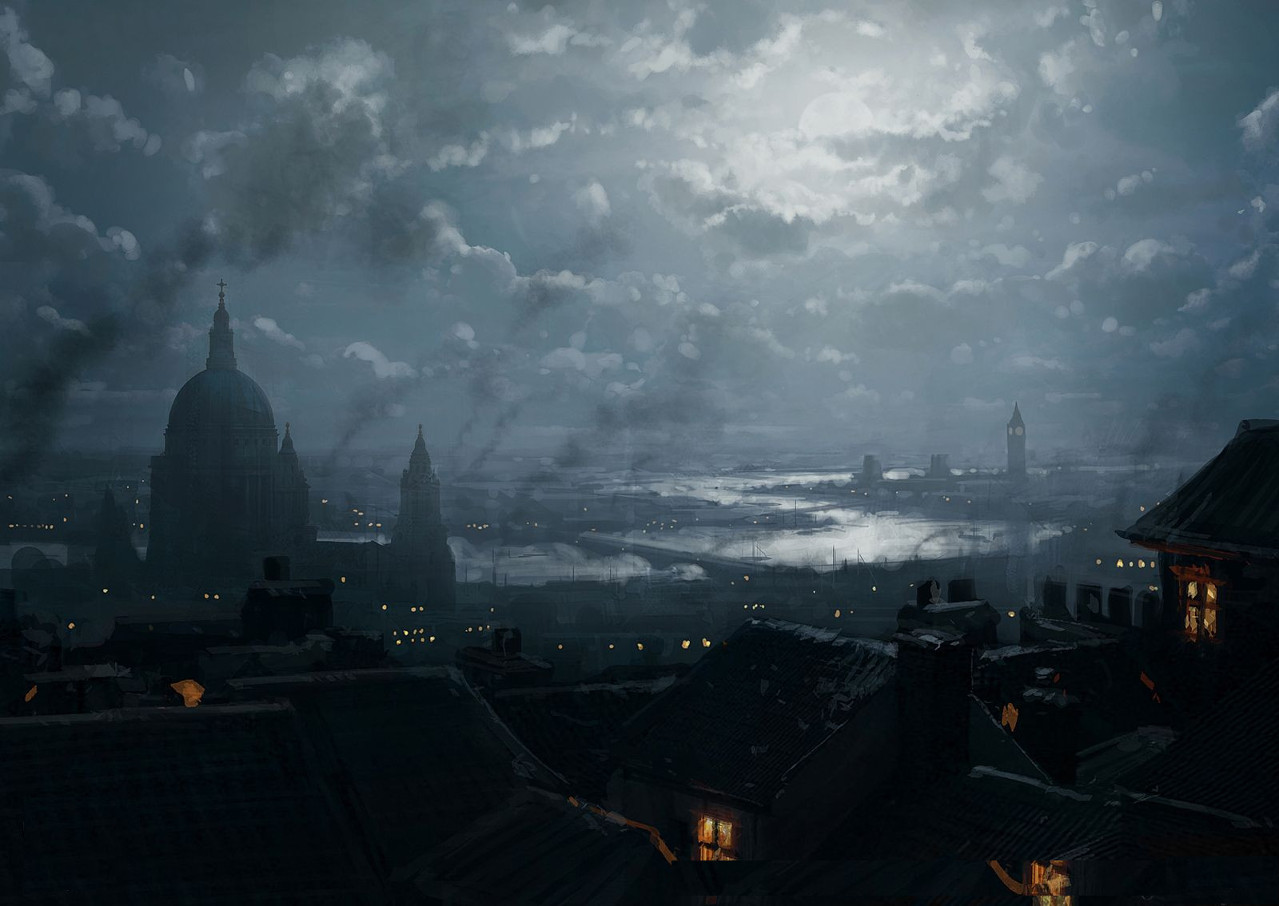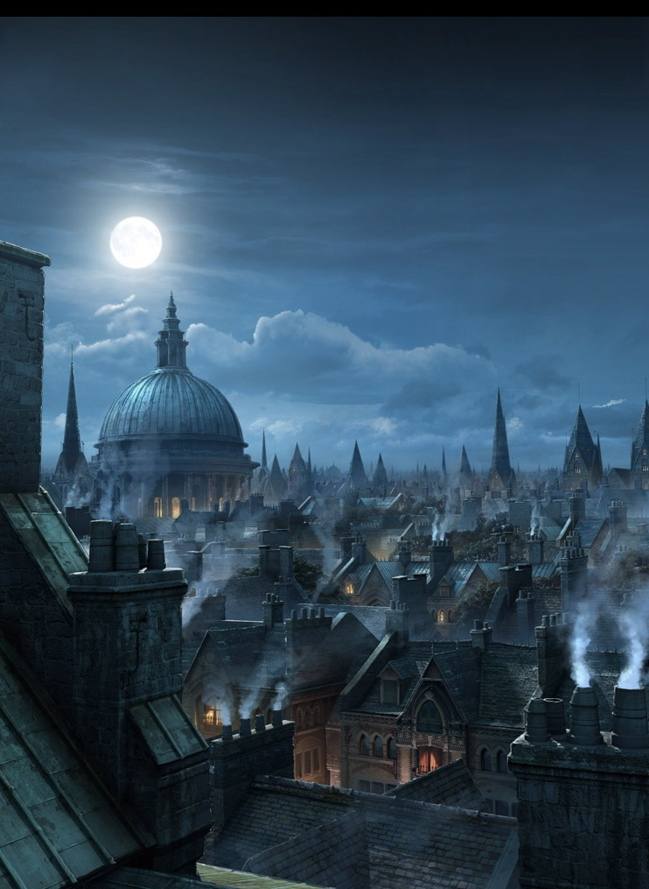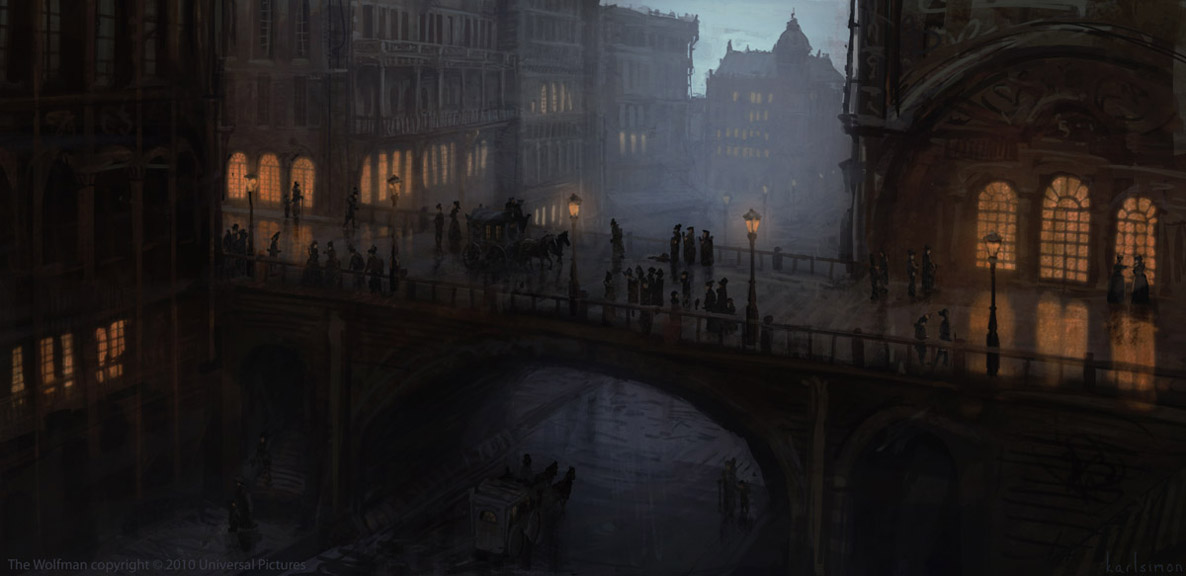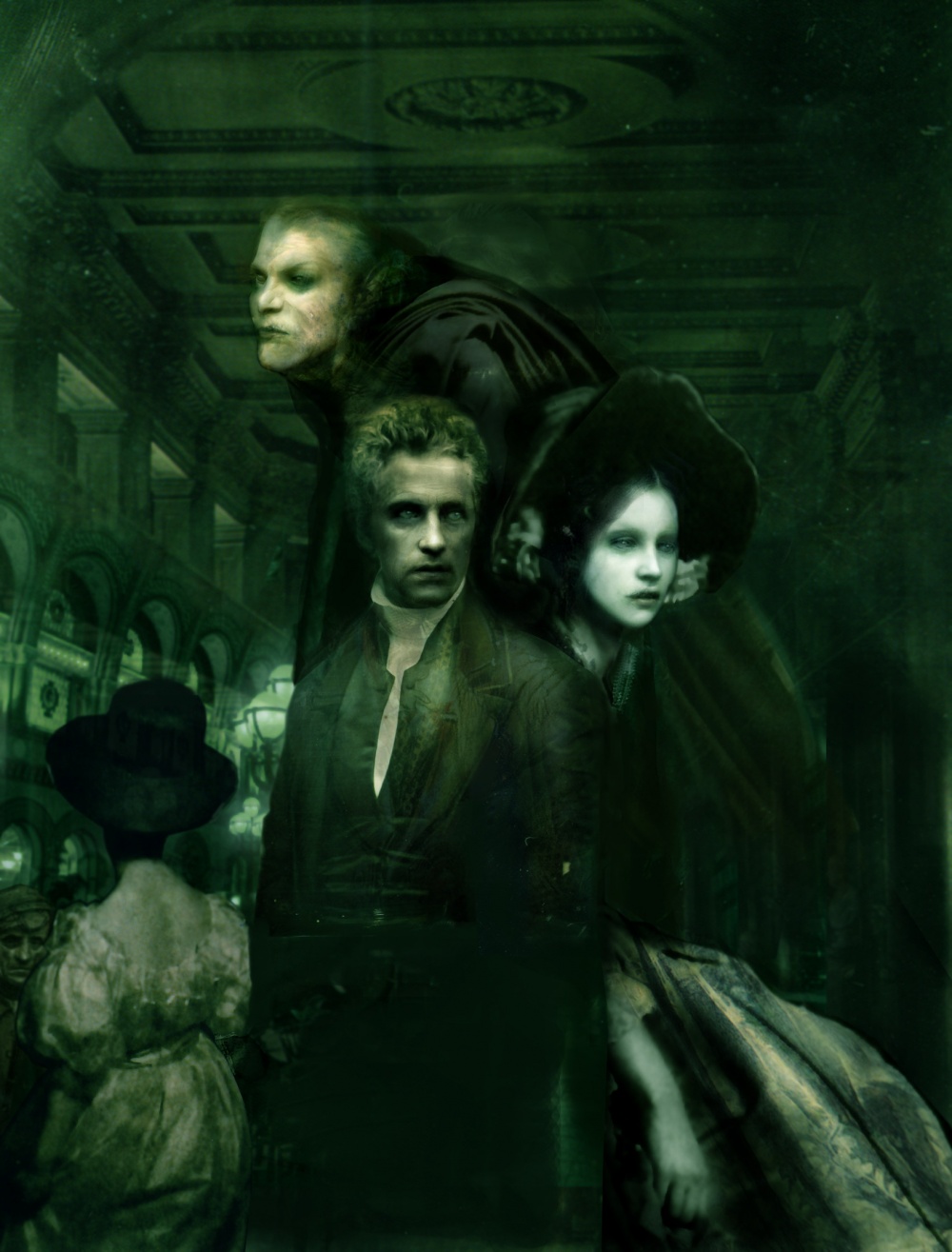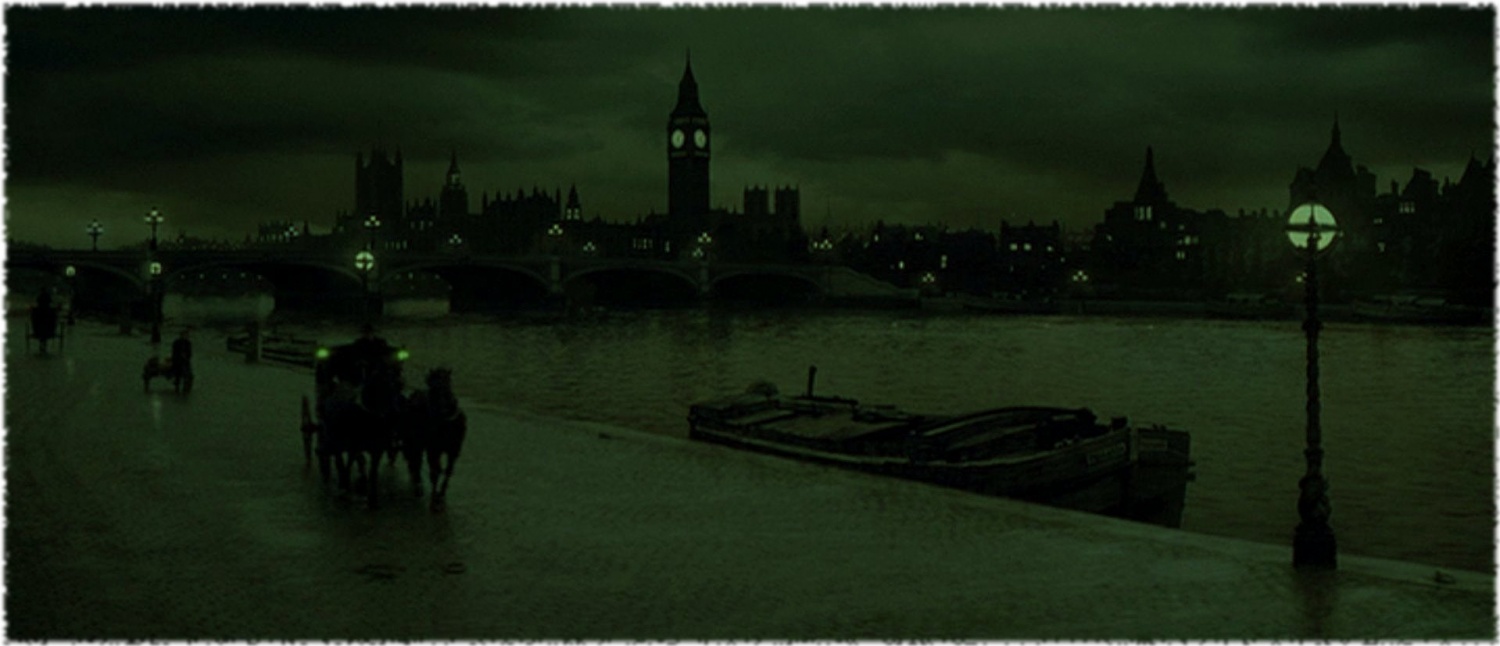London - Pax Britannica: Difference between revisions
| Line 456: | Line 456: | ||
* -- [[Les Ambasadeurs Club: London]] | * -- [[Les Ambasadeurs Club: London]] | ||
* -- [[Hellsfire Club: London]] | |||
===Low End Clubs=== | ===Low End Clubs=== | ||
Revision as of 23:35, 12 March 2020
- World of Darkness: 1900 ~&~ London ~&~ Past Imperfect ~&~ London 1888
Quote
An Introduction to the Capital of Great Britain
- A Note of Welcome
- Dearest Kindred,
- It is with great pleasure that I welcome you to London, the greatest city of the European Union and seat of both Lady Anne Bowesley, Queen of London and the House of Windsor and its heir-apparent Prince William, Duke of Cambridge. I am certain that I do not need to inform a guest such as yourself of the details pertaining to the singular honor the Queen has granted you by giving you leave to remain in this mighty metropolis. You are, for the time being, a welcome guest in this, the greatest of all cities on the face of the Earth.
- Of course, such an honor brings with it certain obligations and responsibilities that I am sure you will find it your pleasure to perform. A society such as ours can function only with the clearest of guidelines and strictures and any violation of said strictures will be met with the appropriate punishment. I hardly need mention the possible severity of such a chastisement. London, both by day and by night, is a city where law reigns supreme. People know their place in society and, while they may work to better it, until they have achieved that worthy aim they do not step beyond those bounds for fear of losing the approbation of their peers. You would, my Kindred, do well to remember that in the coming nights. The particular demands of our own society will be made clear to you in the in the normal way. I feel it is my duty, though, to guide you through the onerous task of dining out in our first weeks in London.
- If I may make a distinction here, one would do well to note the difference between the city, which is London in its wider sense, and the City, which is the square mile within London's medieval city walls in which the major financial business of the city is transacted. Displaying an ignorance of this distinction is a certain way to mark yourself as an uncivilized buffoon from some rural retreat.
- While this letter contains much worthy advice, I would caution you against hoarding it for many nights. Read, learn, and act upon what is within. Then, destroy it utterly, for you know the penalty for transgression against our primary custom. This letter is dispatched to you with the approval of Lady Anne, and the urchin who carried it is tied to us by the oath that cannot be broken. Its security and secrecy are your responsibility and your responsibility alone.
- Dining Out
- As a newcomer to this city, I suspect that it is unlikely that you have made appropriate arrangements for a regular supply of sustenance to your lodgings. I thus offer a few guidelines for a gentleman or lady of our society who seeks to dine with the minimum of fuss and inconvenience. When selecting your repast for the evening, one would do well to consider the social stratification of London society among the kine. They define themselves clearly into three classes, each of which carries its own set of responsibilities and manners of behaving.
- The Working Class
- The lower or working class is composed of those men and women who work with their hands to make a living. They are the laborers, dockworkers, cabbies and cleaners of London. They undertake the manual tasks that keep this city running, yet which require little in the way of higher thought or initiative. Their clothes match their station in life: simple, shoddily fit yet robust and often somewhat dirty. Among themselves, their manner is coarse and bawdy, yet they show due deference to those of higher status within the city, at least upon the surface. Their discussions in the mean and overcrowded slums they call home are of a quite different tone. The dwellings of such folk can be found in particular parts of the city. The East End houses many of them, for example, providing a ready source of menial labor for both the City itself and the transportation hubs that facilitate communication and transaction with the rest of the world.
- Those among us whose manner or linage brands them as part of this lower class will find themselves able to dine easily and freely in such parts of town. They run the risk of consuming a meal tainted by alcohol or the wide variety of drugs that many people of all classes use to distract themselves from the reality of their lives. London can be a harsh mistress for those too weak to or ignorant to seize the opportunities offered, as you will no doubt discover.
- The Middle Class
- The middle classes are those who make their living from the skills of their minds. They are the scholars, businessmen and lawyers of the city; the very lifeblood, if I may venture such a play on words, of London's power and wealth. Most are well educated and some of them, if their fathers or mothers were successful, may well have attended one of the better boarding schools that dot the English countryside. Their clothes are stylish and well made, though they are not prone to the excesses of fashion that often characterize the upper classes. On the whole, they are a dour, serious lot with strong work ethic and traditional and strict moral and religious beliefs that lead them to repress their emotions and passions. This, of course, makes them deliciously easy to manipulate and ideal dining companions for our Kindred.
- Many of the middle classes reside in the center of the city, in areas a short walk from their places of employment. The houses of Mayfair, Knightsbridge and even the better parts of Soho are home to them. Of course, there are other places suitable for such a person, but I will not trouble you with the complexities of London's geography just yet. Many of the middle classes now choose to live in the new suburban areas of London, developing thanks to the rapid growth of London's splendid railway network. Many of our kind have found such places to be suitable location for an evening meal, though one would do well to consult with General Sir Arthur Halesworth before making such a journey. Protocols must be observed in such matters.
- The Upper Class
- The upper classes are composed of those families who have ruled London, England and the whole of the United Kingdom by day for much of the last millennium. They consist of those people whose birthright is aristocracy. They are the lords and ladies, barons, baronets and baronesses of the mortal world. You can be recognize them by their expensive, exquisitely fashionable and beautifully constructed attire, their arrogance and, more often than not, their utter debauchery. Most have enough financial resources to negate the need to work, and so they lose themselves in such pastimes as hunting, politics, military service or sexual adventuring. You should discount them as potential dining partners: to even move on the fringes of their society requires a particular station of birth, significant wealth and a member of the their ranks who is prepared to offer you an introduction. Those of the Kindred who are in a position to do so are often loath to provide such an introduction to one like yourself easily, at least without a significant price being attached to it.
- The upper class's right to rule is unquestioned but rarely exercised. The twin houses of the United Kingdom's parliament, housed in Westminster, work together to create the legislation that determines personal and national destiny. The House of Commons, voted for by men and women of all classes, decides upon the nature of the legislation needed and the house of Lords, in which the men and women of the upper classes sit by right, advise and aid their inferiors by dint of their long experience and noble upbringing.
- Many of our kind feel themselves compelled to build some form of influence over mortal society. If you, too, suffer from this affliction, you would be well advised to steer a course toward the middle classes rather than the upper classes. The reasons for this are twofold. Firstly, the middle classes offer greater influence over the day-to-day running of society, trade and politics. You will find that the right pressure applied on a member of this class can bring a most satisfactory conclusion to pass. Members of the house of Commons are particularly susceptible to pressure of the financial variety. Many of them consider such incentives to be an accepted means of supplementing the stipend they receive for their service in the House.
- A Note of Caution
- Those people who have been knighted by her Majesty and are now known as "Sir" are usually members of the middle classes whose service to the crown has been such that they are subject to special recognition or reward. They occupy a place in society that is both within the echelons of the upper middle classes and the lower upper classes. Thus, they can often be a useful bridge between the two strata of society.
- In Conclusion
- The living people of London are well aware of their place in the social order and are inherently suspicious of any who attempt to move in circles that do not match their standing. Your clothes, manner of speech and bearing will all mark you as a member of a particular class. You should attempt to dine amongst those kine who are of your own apparent class. Any attempt to do otherwise will, unless you are skilled indeed in your choice and manner of dining, attract unwelcome attention and render your chances of remaining within this city somewhat negligible. For example, a gentleman or lady of the middle classes who is found walking the slums of Hackney will be subject to the query and rumor amongst those people who are the lower class, and indeed may attract the attention of the Metropolitan Police.
- I hope that his short work was sufficiently edifying and will prevent any embarrassing misdemeanors in the near future. I look forward to your further education in Elysium in the nights to come.
- I remain, sir or lady, your most obedient servant,
- Stephen Lenoir - E.S.Q.
Appearance
[[]]
Boroughs of London
The administrative area of Greater London contains thirty-two London boroughs. Inner London comprises twelve of these boroughs plus the City of London. Outer London comprises the twenty remaining boroughs of Greater London.
- Inner London
- City of London -- (A ceremonial city and county within Greater London, which is considered not a London borough.)
- City of Westminster
- Kensington and Chelsea
- Hammersmith and Fulham
- Wandsworth
- Lambeth
- Southwark
- Tower Hamlets
- Hackney
- Islington
- Camden
- Brent
- Outer London
- Ealing
- Hounslow
- Richmond upon Thames
- Kingston upon Thames
- Merton
- Sutton
- Croydon
- Bromley
- Lewisham
- Greenwich
- Bexley
- Havering
- Barking and Dagenham
- Redbridge
- Newham
- Waltham Forest - The domain of the Tzimisce Anastasius
- Haringey
- Enfield
- Barnet
- Harrow
- Hillingdon
- Near London
- Mentmore Village
- Radlett Town
Animated 19th Century Map
https://booth.lse.ac.uk/map/13/-0.1227/51.4928/100/0
Climate
Economy
History
Historical Key: Plain "Black" text denotes mortal events, while text in "Maroon" denote Cainite historical events and "Gray" text represent events pertaining to Wraiths and their Grand Necropolis of London.
File:Harolds letter to lady anne.png
A Chronology of London - With Reference to Events in Britain
London is without doubt the most important city in Britain and the world, but to examine its history in isolation would be to miss the forces that drove events in London and provided the motivating force for its occupants, rulers and conquerors. As such, this chronology occasionally strays from details of the city itself to the wider scope in Britain (and occasionally, the world). I beg your indulgence in this matter and pray it does not inconvenience you, dear reader.
The Mists of Time
When the first Cainites came to London one cannot say, but mortals had been living in the isles for millennia when the Romans arrived on these shores in 55 B.C. My lord Mithras has told me of Ancients abiding in Britain when he came to these shores, but it does not seem that any yet survive -- or at least are known, or willing to share their knowledge. We know from the annals of Marcus Verus that Gangrel dwelt here, according to legend having pursued "a great betrayer" from the East. Who or what this was I cannot say, and efforts to draw information from the ancient Baron of Chester have been met with hostility. A substantial Ventrue and Brujah population also resided in Britain, perhaps having accompanied the mortal migrations across Europe, or mayhap displaced there by events in the civilized lands of the Mediterranean.
One legend associated with the founding of London builds on such events, claiming that the founders of London came from Asia Minor, fleeing a great war that claimed their city eleven centuries before the birth of Christ. They say that the people followed their great leaders to the edge of the known world, crossing the narrow seas to a cool but verdant land where they sought to rebuild their lost glories. Their city they called Troia Novantum: New Troy. My lord Mithras decries these claims as "unsubstantiated musings" and asserts that the story is a modern invention popularized over the last fifteen hundred years, one that was never heard in the first century after Christ when he came to the isles (the first reference appears to be in the 6th century A.D. in the poems of Taliesin). The pre-Roman name for London, Trinovantum (according to Geoffrey of Monmouth), would seem to lend some credence to the legend, though it was superceded by the more probable, but equally speculative (save for some place names such as Ludgate), Caer Ludd -- Ludd's Fort -- transformed by the imperials into Londinium. Whatever the truth, the Troy origin story appeals to both Kindred and kine, suggesting an antecedent for the city's glory, most recently exhibited in its role as the capital of the empire. But I digress.
The location we now know as London was a place of power, important to mortals and supernaturals alike. The springs of Tower Hill, Penton and Tothill were sacred to the Druids, and Lupines were also drawn to these sites, though I know not why. Around the times in which Christ walked
Time of Troubles
19th Century London
A Century Yet to Be Born - Dawn of the 20th
Location
Population
Arenas
Attractions
Banks/Exchanges
Bridges
- -- London Bridge
- -- Tower Bridge
- -- Regent Bridge
- -- Westminster Bridge
- -- Temporary Bridge
Castles
- -- Banqueting House
- -- Buckingham Palace - The active residence of the British royal family.
- -- Hampton Court Palace - The western most castle, or rather palace of the royals in London, it is most famous for its association with Henry VIII who made it his primary residence. It is not a true castle, but is really a stately palace built in the late renaissance fashion.
- -- Kensington Palace - The favorite residence of the royals until they found favor with Buckingham, it is both a palace and park. It was also the preferred residence of Princess Diana before her death. It is a very popular tourist attraction.
- -- Kew Palace and Queen Charlotte's Cottage
- -- The Tower of London - The first and primary castle built by the Normans after their invasion, it has protected London for over 900 years. (demolished - 2031)
- -- Windsor Castle - Located on the edge of London, the castle serves as a secondary residence for the royals and is very popular tourist attraction.
Cemeteries
Historically, the cemeteries of London were inner city church-yards, that towards the end of the 17th century became increasingly overcrowded and the source of disease and epidemics. In response, seven new cemeteries were built to deal with this problem. Only Bunhill Fields Burial Ground is older, it was built as burial ground for non-conformists, religious or otherwise. Of the eight below, seven are famous, while Nunhead Cemetery seems to languish in ignominy.
The Famous Seven Cemeteries of London
- -- Kensal Green Cemetery -- Est.1832
- -- West Norwood Cemetery -- Est.1837 Seward
- -- Highgate Cemetery -- Est.1839
- -- Abney Park Cemetery -- Est.1840
- -- Brompton Cemetery -- Est.1840
- -- Nunhead Cemetery -- Est.1840
- -- Tower Hamlets Cemetery Park -- Est.1841
London's Other Cemeteries
- -- Bunhill Fields Burial Ground -- Est.1665
- -- Tottenham Cemetary
Churches
Clubs
- -- Brooks's
- -- Carfax Abbey -- Goth Club & Anarch Hangout.
- -- Heathens Retreat -- Goth/Hollower club known for it's mystic atmosphere.
- -- The Carlton
- -- The Marlborough
- -- Merritt House
- -- The Reform Club
- -- The Taurus Club
- -- Whites
- -- X-Club
Casinos
Crime
Individual Criminals
Opium Dens
Victorian London's reputation as a center of opium smoking is based on the belief of literary fiction over historical fact. The London press, along with popular British authors of the day, were fond of portraying London's Limehouse district as an opium-drenched pit of danger and mystery. In fact, London's Chinese population never exceeded the low hundreds, in large contrast to the tens of thousands of Chinese who settled in North American Chinatowns. In the mid-1880s, Chinatowns started to form in London and Liverpool with grocery stores, eating houses, meeting places and, in the East End, Chinese street names. In 1891, the Census recorded 582 Chinese-born residents in Britain, though this dropped to 387 in 1896. 80% were single males between 20 and 35, the majority being seamen. Companies began to export opium from India to China, selling the drug to raise the money to buy shipments of tea. This was against the law and angered China's authorities. In 1839, war broke out between Britain and China over the opium trade. Britain defeated China and under the terms of the Treaty of Nanking in 1842, Hong Kong became a British colony. In 1857, the Second Opium War resulted in the unequal Treaties of Tianjin which included a clause allowing Britain and France to recruit Chinese to the British Colonies, North America, South America, and Australia as cheap labor. However, Britain did not recruit as many workers as North America, where the Chinese were employed on the construction of the Transcontinental Railroad, and where many Chinese immigrated in search of fortune during the gold rush, thus the Chinese communities were much smaller in Britain.The Chinese immigrants to London often arrived in the East London ports by boat, such as the Blue Funnel Line. Most of them were seamen, and many would have settled in only a few select streets. When jobs on the docks and on boats dried up, many Chinese turned to other businesses, such as the restaurants or laundries.
In the 1860s, "Dark England" with its opium dens in London's East End was described in popular press and books, various individuals and religious organizations began to campaign against unrestricted opium trafficking. At Pennyfields there was a Christian Mission for the Chinese and a Confucian temple. At Limehouse Causeway there was the famous Ah Tack's lodging house. There was much prejudice against the East End Chinese community, with much of it initiated by the writings of Thomas Burke and Sax Rohmer. Both of these men wrote about the Chinese community. Burke and Ward exaggerated the Chinese community's true size and made much mention of gambling, opium dens, and "unholy things" in the shadows. A character from Charles Dickens' last novel, The Mystery of Edwin Drood (1870) sets the scene: "O my poor head! I makes my pipes of old penny ink-bottles, ye see, deary – this is one – and I fits-in a mouthpiece, this way, and I takes my mixter out of this thimble with this little horn spoon; and so I fills, deary. Ah, my poor nerves!"
Dickens is famous for his portrayal and caricature of nineteenth-century London. So it is significant that he has immortalized this opium den in east London, identifying it as part of the fabric-weave of Victorian London. The establishment "run by the Chinaman" described in The Mystery of Edwin Drood, was based on a real opium den. It was run by Ah Sing, or John Johnston as he was known to his clients, an immigrant from Amoy in China. Rare photographs of the Chinese opium scene in East London do exist. A photograph held at the Science Museum in London shows two Chinese women outside Ah Sing's opium den. Ah Sing was a smoker himself and it was claimed that only he had the "true secret of mixing opium ... with an eye to business". His secret evidently brought him much success, as his den was frequented by the local Chinese sailors on a break from working on the ships, but also others. Some of the literary elite of the time including Arthur Conan Doyle (see "The Man with the Twisted Lip") and Dickens himself visited the area, although whether they themselves took up the "pipe" has remained undisclosed. Ah Sing's opium den was probably the most famous of the dens in Victorian London, attracting gentlemen from the very elite of London's high society.
In 1868, the Pharmacy Act recognized dangerous drugs and limited their sale to registered chemists and pharmacists, but until the end of the nineteenth century few doctors and scientists warned about the dangers of drug addiction. When the small number of opium dens gradually declined in London, following crackdowns from the authorities, individuals like Ah Sing were forced to move from their properties, and had to find alternative ways of making a living. In his latter days, it was said that he continued to smoke, despite finding religion. He did eventually manage to give up opium smoking, though only days before he died around 1890, aged 64. He is now buried in Bow Cemetery.
Organized Crime
London was the first city noted to have a major problem with criminal gangs, followed thereafter by American cities such as New York City, Chicago and Los Angeles. A number of street gangs were present in London during the 20th century, many in the East End, often referred to as Mobs, including The Yiddishers, Hoxton Mob, Watney Streeters, Aldgate Mob, Whitechapel Mob, Bethnal Green Mob and the organized Italian Mob headed by Charles Sabini. The history of these gangs is well documented in "London's Underworld: Three centuries of vice and crime".
The Pall Mall Gazette released a research report on gangs and crime in England in 1888, they discuss the downfall and dissolution of a gang called "The Skeleton army" a few years before hand and include a collection of 9 gangs and their respective territories, gathered from contemporary police reports, which are as follows:
| Gang Name | Territory |
|---|---|
| The Marylebone Gang | Lisson Grove. |
| The Fitzroy Place Gang | Regent's Park. |
| The Monkey Parade Gang | Whitechapel. |
| The Black Gang | Union Street, Borough. |
| The New Cut Gang | The New Cut, Lambeth. |
| The Greengate Gang | City Road. |
| The "Prince Arthur" Gang | Duke Street, Blackfriars. |
| "The Gang of Roughs" | Norwood. |
| The Jovial Thirty-Two | Upper Holloway. |
Citizens of London
- ~~ Ah Sing -- Owner of an Opium Den
- ~~ Arthur Conan Doyle --
- ~~ Darcy Tobias - Prostitute -- Fed upon by Henry Stern
Current Events
Missives: In-Game
- ~ Edward Bainbridge to Hedrina Sommer ~ July 17, 1900 A.D.
- ~ [[]] ~
- ~ [[]] ~
- ~ [[]] ~
- ~ [[]] ~
Diners/Restaraunts
- Jonquils Diner low end Gentlemans diner
Fashions
- Canes (http://canequest.com/)
Financial Institutions
Galleries
London is one of the most populous cities in Europe and indeed the world, thus, it comes as no surprise that it is a center of art and culture with literally hundred, perhaps thousands of art galleries. As beauty lies in the eyes of the beholder, and there are over 14 million such beholders in London, galleries and what passes for them literally litter the city. Depending on your taste, the quality and quantity of London's art scene varies from night to night, and only a true aficionado would be able to delve the glamorous showroom extravaganzas, glitzy parties showings and cold-water flat revivals to separate the dross from that sublime perfection called art. What follows is a select sampling of London's most famous and enduring art showrooms, some have survived for decades, others for centuries and some may be more immortal than the Kindred who frequent them.
- -- Barbican Art Gallery: Part of the Barbican Centre for arts and conferences, and one of two galleries at the Barbican. The Gallery has a changing programme of major photography, fine art and design exhibitions. Admission charges for exhibitions vary.
- -- Hayward Gallery: Hayward Gallery, part of Southbank Centre on the South Bank of the Thames, has a long history of presenting work by the world’s most adventurous and innovative artists. In addition to putting on major exhibitions and commissioning new artworks in the gallery, the Hayward also organizes projects, installations and talks inside and outside other venues across Southbank Centre. It is the only gallery in the world created in the Brutalist style of architecture – a striking concrete form that Londoners either love or hate. Hayward Gallery has hosted striking exhibitions by Antony Gormley, Dan Flavin, Roy Lichtenstein, Tracey Emin as well as surveys of the Arts Council Collection.
- -- Museum of Contemporary Art: The Museum of Contemporary Art, formerly the Saatchi Gallery was established by Charles Saatchi in 1985. It is well known for controversial contemporary pieces of art and displays of work by relatively unknown artists. In 1992 it held the Young British Artists shows, a fixture for several years where Damien Hirst and Tracey Emin rose to fame. These shows featured Hirst’s famous pickled animals and coloured spots, and Emin’s unmade bed and tent (which was destroyed in a fire in 2006). The gallery was originally housed on Boundary Road, St John’s Wood, and moved to County Hall, Westminster in 2003. Its current site is at the Duke of York’s Headquarters where it has been since 2008. In 2012 the gallery was given to the public and was renamed to the Museum of Contemporary Art.
- -- National Gallery: The National Gallery displays over 2000 Western European paintings from the middle ages to the 20th century. Discover inspiring art by Botticelli, Leonardo da Vinci, Rembrandt, Gainsborough, Turner, Renoir, Cezanne and Van Gogh. The pictures in the collection belong to the public and admission to see them is free. There are special exhibitions, lectures, video and audio-visual programmes, guided tours and holiday events for children and adults.
- -- National Portrait Gallery: The National Portrait Gallery houses the world’s largest collection of personalities and faces, from the late Middle Ages to the present day. Visitors come face to face with the people who have shaped British history from kings and queens to musicians and film stars. Artists featured range from Holbein to Hockney and the collection includes work across all media, from painting and sculpture to photography and video. As well as the permanent displays, the National Portrait Gallery has a diverse programme of exhibitions and free events and a stunning rooftop restaurant with spectacular views across the London skyline.
- -- Royal Academy of Arts: The Royal Academy of Arts, founded in 1768, is the oldest fine arts institution in Britain. Situated in the heart of London's West End on Piccadilly, it is universally renowned for hosting some of the capital's finest temporary and touring exhibitions. Its annual Summer Exhibition, running since the institution first opened, displays select work from up and coming artists and by academicians.
- -- Serpentine Gallery: One of London's best-loved contemporary art galleries, with a programme of modern and contemporary art exhibitions from Andy Warhol to Piero Manzoni, Cindy Sherman and Chris Ofili. Admission free, architectural pavilion with cafe during the summer and an art bookshop in the gallery.
- -- Somerset House: Somerset House is a spectacular neo-classical building in the heart of London, sitting between the Strand and the River Thames. During summer months 55 fountains dance in the courtyard, and in winter you can skate on London's favourite ice rink. Somerset House also hosts open-air concerts and films, contemporary art and design exhibitions, family workshops and free guided tours of spaces usually hidden to visitors.
- The mission of Somerset House Trust is to conserve and maintain Somerset House to the highest standards and to develop the site as a public space which is universally recognized as a world class visitor attraction and center of excellence for culture and the arts.
- -- Tate Britain: London's Tate Britain holds the largest collection of British art in the world from 1500 to the present day. You'll find masterpieces by Gainsborough, Hogarth, Millais, Whistler, as well as outstanding modern and contemporary artists such as Francis Bacon, Lucian Freud, and Damien Hirst. We also have the largest collection of works by JMW Turner in the world.
- -- Tate Modern: A visit to London isn't complete without a trip to Tate Modern. Britain's national museum of modern and contemporary art from around the world is housed in the former Bankside Power Station on the banks of the Thames. The awe-inspiring Turbine Hall runs the length of the entire building and you can see amazing work for free by artists such as Cézanne, Bonnard, Matisse, Picasso, Rothko, Dalí, Pollock, Warhol and Bourgeois.
- -- Whitechapel Art Gallery: For more than a century the Whitechapel Gallery has premiered world-class artists from modern masters such as Pablo Picasso, Jackson Pollock, Mark Rothko and Frida Kahlo to contemporaries such as Sophie Calle, Lucian Freud, Gilbert & George and Mark Wallinger.
- With beautiful galleries, exhibitions, artist commissions, collection displays, historic archives, education resources, inspiring art courses, dining room and bookshop, the Gallery is open all year round, so there is always something free to see.
- The Gallery is a touchstone for contemporary art internationally, plays a central role in London’s cultural landscape and is pivotal to the continued growth of the world’s most vibrant contemporary art quarter.
Government
Hospitals
Below are a list of 12 hospitals rated highly by a variety of sources.
- -- Great Ormond Street Hospital for Children --
- -- London Bridge Hospital --
- -- Moorfields Eye Hospital --
- -- Royal Free Hospital --
- -- St. Thomas' Hospital -- Located across the river from Parliment
- NHS Trust hospital in Hampstead. The trust offers a major accident service, all branches of surgery and medicine, paediatrics, maternity services, care of the elderly services and an adolescent psychiatric service.
- NHS Trust incorporating St George's Hospital in Tooting, Bolingbroke Hospital in Battersea and the Wolfson Centre for neurorehabilitation in Wimbledon.
- -- The Cromwell Hospital --
- Independent hospital in Kensington specialising in radiotherapy and oncology, liver disease, the Neurosciences and cardiothoracic disorders.
- -- The Harley Street Clinic --
- Oncology unit and acute care hospital also specialising in adult and paediatric cardiac surgery.
- -- The Lister Hospital --
- Private hospital in the heart of Chelsea.
- -- The Portland Hospital --
- London's only private hospital dedicated entirely to women and children.
- Private hospital and acute care facility situated in the heart of Marylebone.
- Leading independent cancer centre specialising in cancer diagnosis, treatment and research.
- -- St Ann's Hospital -- Insane Asylum --
- -- The Wellington Hospital --
- Large purpose-built private hospital located in St John's Wood.
Hotels & Hostels
- -- Claridge's - Mayfair - Est.1812 (as Mivart's Hotel)
- -- Langham Hotel - Marylebone - Est.1865
- -- The Savoy Hotel - The Strand - City of Westminster - Est.1889
- -- Rombards Hotel - Hobart & Grossvenor streets.
Hunters
The Inquisition
Landmarks
- -- Big Ben
- -- Cleopatra's Needle (London 1900)
- -- Kensington Palace
- -- The Tower of London
- -- St. Paul's Cathedral
- -- Palace of Westminster 1900
- -- Westminster Abbey
- -- The Ley Convergence of London
Libraries
Monasteries
- -- Curzon Park Abbey - is one of three monasteries of nuns in the English Benedictine Congregation.
- -- Ealing Abbey - is a Roman Catholic Benedictine monastic foundation on Castlebar Hill in Ealing. It is part of the English Benedictine Congregation.
Monuments
Museums
- -- The British Museum -- Great Russell Street - Bloomsbury - Borough of Camden - Est.1753
Night Life
Exclusive Clubs
Low End Clubs
- -- Garfingles
- -- Pearce House -- Run by Henry St. John
Public Friendly Establishments
Occult Orders of London
- - Hermetic Order of the Rising Dawn
Parks
Private Residences
Pubs
- -- Cittie of Yorke
- -- Gordon's Wine Bar
- -- Lamb & Flag
- -- The Blind Beggar
- -- The Dove
- -- The George Inn
- -- The Goat & Compasses
- -- The Mayflower
- -- The Spaniards Inn
- -- The Ten Bells
- -- The World's End
- -- Ye Olde Cheshire Cheese
Restaurants
Ruins
Schools
- - Ekkehard Advanced School for the Occult
- - Wendals School - school for the academic research of the occult.
Shops
Supernaturals of London
Changing Breeds
Cats
Wolves
Gallu
Hell Kin
Mages
London by Night
Vampires
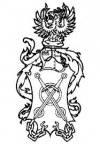 Clan Brujah
Clan Brujah 
- Don Cerro - Dignitary, Scholar and Brujah Primogen of London
- Theo Bell - Neonate & Protege
- Reginald Moore - The Indigent Intellectual
- Paul Bedwell - Agent Provocateur
- Justin Lannel - American neonate, Childe of General
- Herbert Westin - Anarchist & Arms Dealer
 Clan Gangrel
Clan Gangrel 
- General Sir Arthur Halesworth - The Sheriff of South London
- Nathaniel Simmons - The Faithless Hound
 Clan Malkavian
Clan Malkavian 
- Abraham Mellon - Demented Mento
- Dr.Timothy - The Lunatic Primogen of London
- Juliet Parr - The Sheriff of Northern London
 Clan Nosferatu
Clan Nosferatu 
- Harold Tanner - The Nosferatu Primogen & Leper Archivist
- Violet Mary - The Hidden Harpy
- Rathe Haversham - Prince of the Poor
 Clan Toreador
Clan Toreador 
- Eric Baring-Gould - Toreador Primogen of London
- Henry Stern - Renowned Toreador Sculptor
- Horace Holden - Keeper of London Elysium
- Lorna Dingwall - The Scottish Hostage
 Clan Tremere
Clan Tremere 
- Alric D'Fleur - Warrior of the 7th Circle
- Edward Bainbridge - Regent of the 5th Circle
- Rebecca Grey - Solitary Wiccan Practitioner & Herbalist (deceased)
- Sri Sansa - The Indian Guru
- Tania Caboche - Child of Celestine, her eyes in London.
The Gargoyles of Clan Tremere
 Clan Ventrue
Clan Ventrue 
- Mithras - God-Prince of London
- Lady Anne Bowesley - Seneschal of London
- Cyril Masters - Solicitor of the Night
- Rory McAndrew - Agent Plenipotentiary of the Camarilla
 The Other Camarilla
The Other Camarilla 
- Stephen Lenoir - Guide to London's Lost
- Lorna Dingwall - Toreador Ambassador from Edinburgh
- Janet Latimer - Ventrue Ambassador from Manchester
 The Independent Clans of London
The Independent Clans of London 
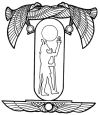 Halim Bey - The Merchant from Alexandria
Halim Bey - The Merchant from Alexandria
- Janos Handoval - Giovanni Ghoul
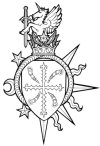 Dhita Choudhair - Ravnos Envoy from New Delhi
Dhita Choudhair - Ravnos Envoy from New Delhi
 Isa Mac Aba - Oneiros Follower of Lilith
Isa Mac Aba - Oneiros Follower of Lilith
File:LogoClanTzimisce.jpg Artemius Anastasius Tzimisce member of the Tal Meh Roh
File:LogoClanKiasid.jpg Faramund Magnus
Visitors to London
Wraiths
Sources
https://www.youtube.com/watch?v=ZUdOXhYwrgU
https://en.wikipedia.org/wiki/Pax_Britannica




